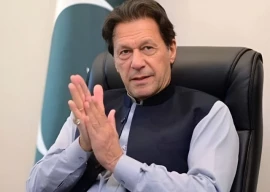
The phrase “Bottom of the Pyramid” (BOP) was first coined by US president Eisenhower in 1932 and it was not until 1998 when two prominent US professors defined it as people earning less than $2 a day. This helped define the largest yet poorest socio-economic class, making up roughly 2.8 billion people or 40% of the world’s population.
Pakistan has a checkered history on this front. It is reported that poverty level in the 50s was as high as 60%. By early 90s it had more than halved to mid-20s mainly behind economic growth during President Ayub Khan’s rule plus the huge influx of western aid to fight the Russians during the 80s – both these decades delivered an impressive 7% GDP growth rate.
In the 90s, GDP growth fell to a dismal 4%, with 1993 and 1997 showing growth below 2% while poverty mushroomed back to the mid-30s. From 1999 to 2007, poverty dropped to 23% as Pakistan recorded growth of 7% from 2004 to 2007. Since then, it has swelled back to mid-30s as growth has dropped to an average of 3% over the last four years.
As clear from this data, poverty is directly correlated with GDP growth. As and when economy grows, job opportunities appear, money for development becomes available and wealth, thus created, trickles down to the needy and underprivileged. Hence, it is critical for the rulers to keep their finger on the economic growth pulse and maximise it as 60 million lives can drop to bare sustenance level in no time if the economy does not grow in high single digit.
We can always talk of the government’s role in poverty alleviation, but we in the business community and citizens in general can also do a lot to assist this BOP cluster. The business community can help in breaking the paradigm of affordability using technology and finding creative solutions. There are many great examples where corporations and social entrepreneurs have single-mindedly focused on finding solutions for the BOP cluster while also growing their own businesses.
A key affordability challenge is that access to goods and services is beyond the budgets of the poor plus they have no access to credit. One of the brightest examples comes from Bangladesh where Muhammad Yunus launched a research project in 1976 to examine a credit delivery system targeting the rural poor. As of October 2007, total borrowers of his Grameen Bank stood at 7.34 million, 97% of those were women and loans worth $11.35 billion were distributed with a 96.7% recovery rate.
Another unique market-based approach to reduce poverty is to design products and services with low-cash outlays. An innovative healthcare approach is being tested by Naya Jeevan in Pakistan to provide healthcare including hospitalisation insurance coupled with value-added services for the poor – package per person costs only Rs200 per month.
P&G introduced for the first time in Pakistan shampoo sachets priced at Rs2 in late 90s which allowed the BOP cluster to use a shampoo for the first time.
Other examples exist where businesses have partnered with communities to alleviate poverty, such as in 2005 SC Johnson partnered with youth groups in Kenya and created a sustainable community-based waste management company for the residents of slums.
We in Pakistan must help the “Bottom of the Pyramid” population by reapplying globally-proven ideas, venturing into social entrepreneurship as well as corporations finding new creative ways to make their products and services more affordable and accessible to the poor.
The writer works in the corporate sector and is active on various business forums and trade bodies.
Published in The Express Tribune, May 14th, 2012.
COMMENTS (10)
Comments are moderated and generally will be posted if they are on-topic and not abusive.
For more information, please see our Comments FAQ
1732521023-0/biden-(1)1732521023-0-405x300.webp)
1732520496-0/BeFunky-collage-(86)1732520496-0-165x106.webp)
1732519472-0/lamar-(3)1732519472-0-165x106.webp)
1732519298-0/BeFunky-collage-(85)1732519298-0-165x106.webp)

1732515558-0/Copy-of-Untitled-(76)1732515558-0-270x192.webp)




1732513395-0/Copy-of-Untitled-(75)1732513395-0-270x192.webp)






@Indian: I am pretty much in your camp from the theory point of view. However, there is merit in what C.K. was saying and the final right solution is a combination of his and Aneel's concetps. I think we, the Intelligentsia as well as the developed nations, need to have a consolidated strategy in addressing the issue of global povety. Wiht the commulative wealth we can eradicate the issue of education, health, sanitation, job creation, etc. Unfortuntely no one things that way but a few exceptions like Bill and Malinda Gate Foundation, etc. I would love to read CK last speach. Take care
@ saad good to hear from you Saad......He was my idol to..and was a genuinely good man....unforrtunately we lost him....I was present in the last speech that he gave at IIM -A and the audio and video of which i have kept it as my treasure....I though am in contact with Aneel Karnani too....Aneel & C K were friends but with diverrgent views.......Unfortunately i dont subcrbe to CK's view that Poverty can be addressed only by MNCs at the BOP...it can be addressed by other ways toowhich includes social enterprises creation ..yet i respect the man......anyways peace may be with him ,now that he is no more...and BTW..respect to you too
@Indian: Don;t understand what you are referring to. C. K. Prahalad was my professor at Michgan back in 1987 when I was an MBA student. He never made me feel he was representing only Indians in his study -- he was talking about the global poverty issues. Also the partner in his study was Stuart L. Hart professor at North Carolina and he was an American. Prahalad was an amazing prefessor and has left a lifetime impression on me on the importance of strategic planning. I have studied his paper "The Fortune at the Bottom of the Pyramid" thoroughly. In fact I have read a rebuttle of their paper by Aneel Karnani who challenged very eloquently against the findings of Prahalad and Hart.
@Tanoli: To your last question on how $2 / sachet helps alleviate poverty? Following are the premises that underlie bottom of pyramid economics...Right priced product for big market segments at the bottom of the pyramid means you will have High revenue because of low price x significantly high volume , which feeds into the following model: High consumption = High economic growth = Low poverty. Thus putting it altogether, by making products affordable, businesses are not only improving standard of life for people at the bottom of the pyramid but also helping reduce poverty levels because of consumption and trickle-down affects. Here it goes without saying that this approach by itself is not sufficient and states need to facilitate re-distribution of resources through taxation and pro-poor expenditure.
Saad - Thank you for highlighting the bottom of the pyramid issue. Poverty alleviation does require a high GDP growth.
At the same time, the issue is not of lack of wealth but the distribution of it. There can be two simultaneous approaches towards equitable distribution of wealth. Firstly, a robust anti-corruption system and secondly, increase in philanthropy.
What is the defination of BOP in Pakistan?
The writer should have really mentioned the name of two persons who highlighted the $ 2 a day concept and the fact that there is actually a huge market to serve at the BOTTOM OF THE PYRAMID...The name of the Profs was C' K Prahalad ,an Indian Prof at Ross School of business (and not an american)....The name of the book was "Fortune at the bottom of the pyramid".......The writer should do a proper study of the background before trying his hand at publishing something away from his subject area,.
BOP means screwing the poor to grow your business. Grameen Bank, for example, charge an interest rate of around 30% from the poor to fuel growth for himself. It has been now established fact that this model has nothing to do with poverty alleviation- they themselves do not claim that. Similarly, how P&G offering Rs.2 shampoo help alleviate poverty?
While we all realize that the low groth rate are increasing the number of poors in Pakistan, what solutions are there to stop this growth? We cannot expect the inept government to provide ant relief to the business sector / entrepreneurs who are the engine of growth and job creation. So what are the alternatives???
The rapid proliferation of mobile phones in Pakistan has demonstrated that marketing to the poor is a lucrative opportunity for domestic and multinational companies. Any effort they make to help build BOP consumers, particularly in Pakistan's rural areas, is a matter of enlightened self-interest.
http://www.riazhaq.com/2011/10/fmcg-companies-profit-from-rural.html